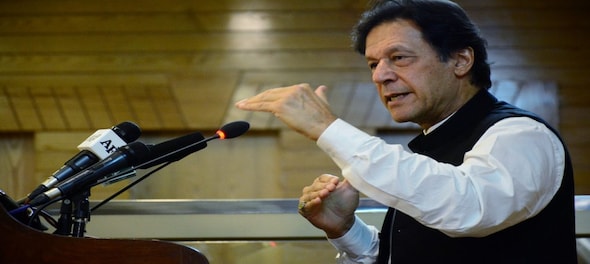
Amid political turmoil in Pakistan, a no-confidence motion was tabled in the national assembly against the country’s Prime Minister Imran Khan to remove the embattled cricketer-turned-politician from the top post.
The lower house of the parliament will debate on the motion, moved by opposition leader Shahbaz Sharif, on Thursday. Khan has been accused of mismanaging the nation’s economy.
What is a no-confidence motion?
A no-confidence motion is a floor test taken to determine if the executive enjoys the confidence of the legislature. Any MP can propose a no-confidence motion and need not give a reason for it. If the motion is accepted, the party forming the government will have to prove its majority in the parliament. MPs from all parties will vote to decide if they want the government to continue. A no-confidence motion has the power to trigger a general election and bring in a new PM.
How does it work?
In Pakistan, if the national assembly is not in session, a requisition has to be made under Article 54 of the Constitution to start the process of the no-trust vote. The requisition for a vote of no-confidence against the prime minister will have to be signed by at least 20 percent of the total members of the house. The Pakistan National Assembly has 342 members, 20 percent of which is 68. Once submitted, the speaker of the house has to mandatorily summon a session within 14 days.
According to the rules, from the day the resolution is moved, it will not be voted upon before three days or later than seven days.
During the no-confidence motion, the gates of the house are closed. Members voting for the motion are asked to exit from one gate, while those voting against it exit from another gate. Votes are counted as they exit. Once the counting is completed and the hall is emptied, members are once again called into the hall and the result is announced by the speaker, veteran journalist Mazhar Abbas told Dawn.
If the no-trust resolution is passed against the prime minister, he ceases to hold office and his cabinet is dissolved. The National Assembly then elects a new leader.
No-confidence against Imran Khan
Pakistan plunged into political uncertainty on March 8 when the combined opposition announced it would bring a vote of no-confidence against Khan, endangering the government.
On Monday, the no-confidence motion was presented in Parliament and the speaker adjourned the National Assembly after it was tabled. The next session has been scheduled for March 31. As the vote for no-confidence resolution cannot be called before three days, the earliest that the house can vote is on March 31.
Khan, 69, came to power in 2018 with 176 votes. He now requires votes from 172 lawmakers to remain in power. His Pakistan Tehreek-e-Insaf Party (PTI) has 155 members in the 342-member National Assembly. Khan’s major allies seem to be looking the other way, while many party members are revolting against him, giving more confidence to the opposition parties that they can dislodge the government.
“We have the support of required lawmakers to oust Imran Khan’s government,” Al Jazeera quoted Bilawal Bhutto Zardari, the leader of the key opposition Pakistan People’s Party, as saying.
However, interior minister Sheikh Rashid said Khan was not going anywhere as the no-confidence motion would be defeated.
Khan’s rally
Khan addressed a massive rally in Islamabad on Sunday ahead of the no-confidence motion, where he claimed to be the victim of a conspiracy supported by foreign powers.
Khan said he had a letter as evidence to support his claim that local politicians were being influenced by foreign elements to “mend the country’s foreign policy".
Has it happened before?
Although no-confidence motion was tabled against two prime ministers in Pakistan before, no premier has been removed through the motion in the country’s history till now.
In 2006, a no-confidence motion was brought against former Prime Minister Shaukat Aziz, which he survived.
Prior to that, Pakistan’s first no-confidence motion was brought against former Prime Minister Benazir Bhutto in 1989. She too survived the no-trust vote.



